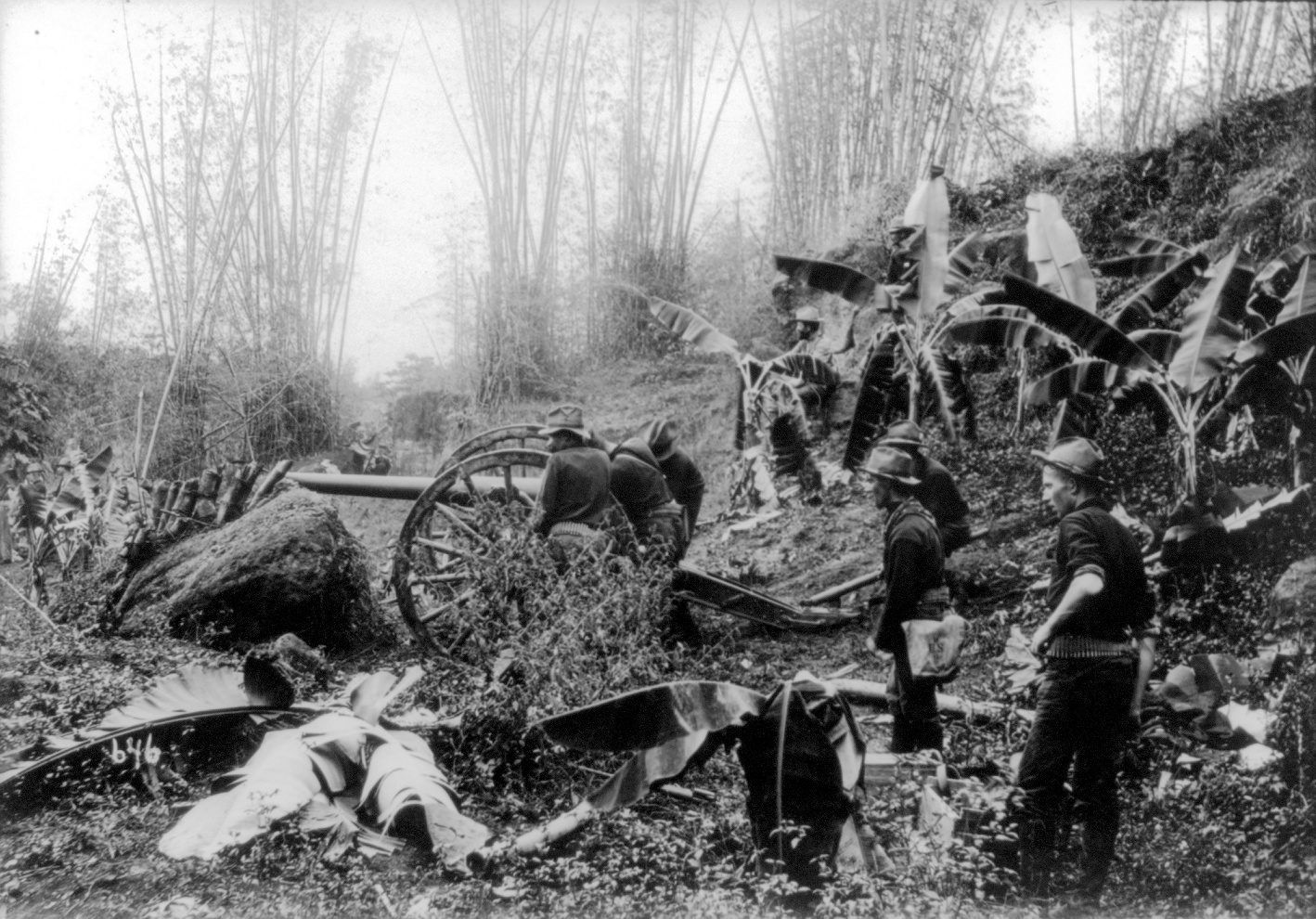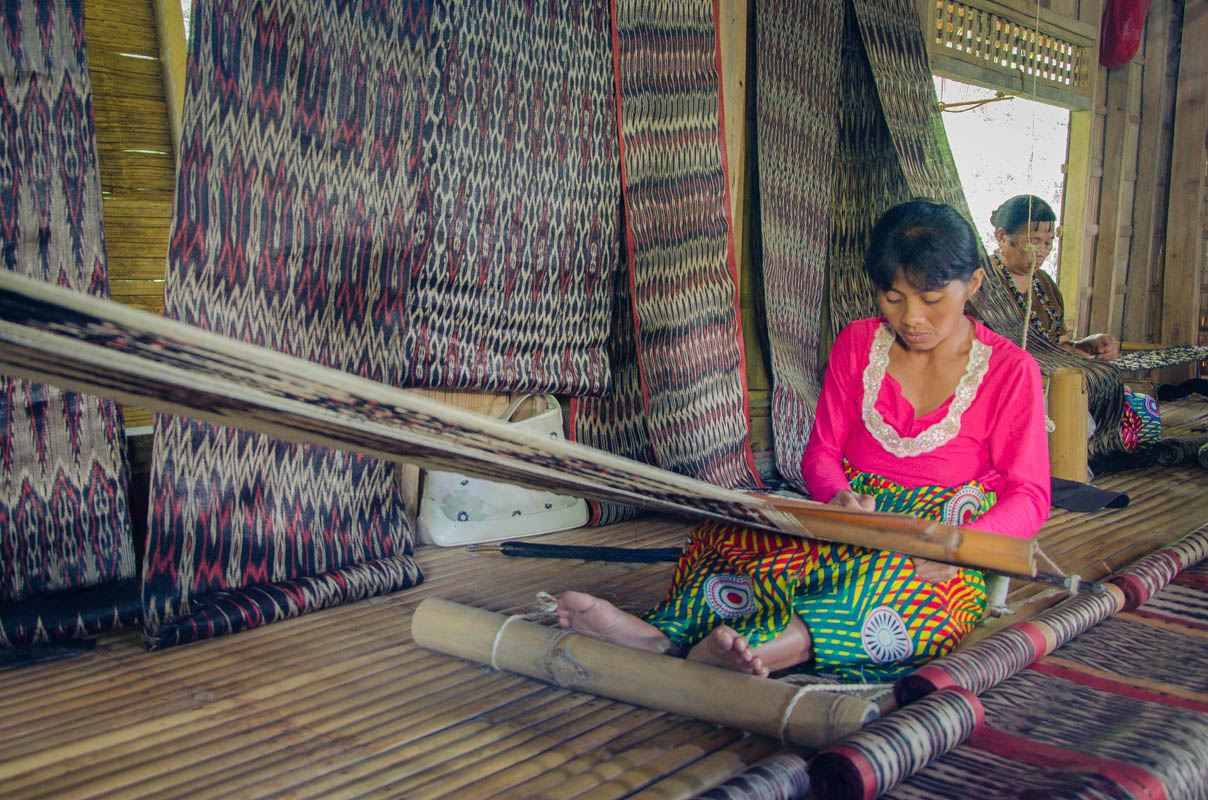|
Binakael
Binakael (binakel, binakol, binakul) (transliterated, "to do a sphere") is a type of weaving pattern traditional in the Philippines. Patterns consisting entirely of straight lines are woven so as to create the illusion of curves and volumes. A sense of motion is also sought. Designs are geometric, but often representational. The techniques create illusionistic designs similar to op art patterns and were popular by the late 19th century, when the United States colonized the Philippines and American museums collected many traditional Philippine textiles. Binakael patterns may use a two-block rep weave, making them double-sided, but with colour reversal. In culture Mara Coson's novel "Aliasing" was inspired by binakael weave. See also * Op art * Inabel * T'nalak ''T'nalak'' (also spelled ''tinalak''), is a weaving tradition of the T'boli people of South Cotabato, Philippines. T'nalak cloth is woven exclusively by women who have received the designs for the weave in their dream ... [...More Info...] [...Related Items...] OR: [Wikipedia] [Google] [Baidu] |
Op Art
Op art, short for optical art, is a style of visual art that uses optical illusions. Op artworks are abstract, with many better-known pieces created in black and white. Typically, they give the viewer the impression of movement, hidden images, flashing and vibrating patterns, or swelling or warping. History The antecedents of op art, in terms of graphic and color effects, can be traced back to Neo-impressionism, Cubism, Futurism, Constructivism and Dada. László Moholy-Nagy produced photographic op art and taught the subject in the Bauhaus. One of his lessons consisted of making his students produce holes in cards and then photographing them. ''Time'' magazine coined the term ''op art'' in 1964, in response to Julian Stanczak's show ''Optical Paintings at the Martha Jackson Gallery'', to mean a form of abstract art (specifically non-objective art) that uses optical illusions. Works now described as "op art" had been produced for several years before ''Time's'' 1964 a ... [...More Info...] [...Related Items...] OR: [Wikipedia] [Google] [Baidu] |
Philippine–American War
The Philippine–American War or Filipino–American War ( es, Guerra filipina-estadounidense, tl, Digmaang Pilipino–Amerikano), previously referred to as the Philippine Insurrection or the Tagalog Insurgency by the United States, was an armed conflict between the First Philippine Republic and the United States that started on February 4, 1899, and ended on July 2, 1902. The conflict arose in 1898 when the United States, rather than acknowledging the Philippines' Philippine Declaration of Independence, declaration of independence, annexed the Philippines under the Treaty of Paris (1898), Treaty of Paris at the conclusion of the Spanish–American War. The war can be seen as a continuation of the Philippine struggle for independence that began in 1896 with the Philippine Revolution against Spanish East Indies, Spanish rule. Fighting erupted between forces of the United States and those of the Philippine Republic on February 4, 1899, in what became known as the Battle of Manila ... [...More Info...] [...Related Items...] OR: [Wikipedia] [Google] [Baidu] |
Op Art
Op art, short for optical art, is a style of visual art that uses optical illusions. Op artworks are abstract, with many better-known pieces created in black and white. Typically, they give the viewer the impression of movement, hidden images, flashing and vibrating patterns, or swelling or warping. History The antecedents of op art, in terms of graphic and color effects, can be traced back to Neo-impressionism, Cubism, Futurism, Constructivism and Dada. László Moholy-Nagy produced photographic op art and taught the subject in the Bauhaus. One of his lessons consisted of making his students produce holes in cards and then photographing them. ''Time'' magazine coined the term ''op art'' in 1964, in response to Julian Stanczak's show ''Optical Paintings at the Martha Jackson Gallery'', to mean a form of abstract art (specifically non-objective art) that uses optical illusions. Works now described as "op art" had been produced for several years before ''Time's'' 1964 a ... [...More Info...] [...Related Items...] OR: [Wikipedia] [Google] [Baidu] |
Inabel
Inabel, sometimes referred to as Abel Iloco or simply Abel, is a weaving tradition native to the Ilocano people of Northern Luzon in the Philippines. The textile it produces is sought after in the fashion and interior design industries due to its softness, durability, suitability in tropical climates, and for its austere design patterns. Due to the rarity of skilled weavers and the rarity of raw materials such as handspun cotton thread, the textile has become rare, although weaving communities still persist in the towns of Bangar in La Union; Santiago, Santa, Bantay, and Vigan in Ilocos Sur; and Pinili, Paoay, and Sarrat in Ilocos Norte. The term is derived from the local verb for "weave", "''abel''" and the Ilocano noun "inabel," describing any kind of woven fabric. It has since been adapted to refer to the specific kind of textile indigenous to the Ilocos region. See also *Abacá *Batik *Piña *Malong * Tapis *T'nalak ''T'nalak'' (also spelled ''tinalak''), is a weaving trad ... [...More Info...] [...Related Items...] OR: [Wikipedia] [Google] [Baidu] |
T'nalak
''T'nalak'' (also spelled ''tinalak''), is a weaving tradition of the T'boli people of South Cotabato, Philippines. T'nalak cloth is woven exclusively by women who have received the designs for the weave in their dreams, which they believe are a gift from Fu Dalu, the T'boli Goddess of abacá. The rest of the community, including the men, are able to participate in the production of T'nalak by carefully selecting, stripping, and sun-drying the abacá fibers to be used. Once the fibers have been prepared, they are dyed using the dye-resist technique called "ikat", based on the pattern dreamt by the weaver; the woman gifted by Fu Dalu with the design then weaves the cloth using a backstrap loom. The fact that the designs are derived from the dreams of the weavers means that traditional t'nalak patterns cannot be mass-produced. Because the patterns are based on dreams, the weavers of t'nalak are popularly referred to as ''dreamweavers.'' Production and history T'nalak weaving is pa ... [...More Info...] [...Related Items...] OR: [Wikipedia] [Google] [Baidu] |
Weaving
Weaving is a method of textile production in which two distinct sets of yarns or threads are interlaced at right angles to form a fabric or cloth. Other methods are knitting, crocheting, felting, and braiding or plaiting. The longitudinal threads are called the warp and the lateral threads are the weft, woof, or filling. (''Weft'' is an Old English word meaning "that which is woven"; compare ''leave'' and ''left''.) The method in which these threads are interwoven affects the characteristics of the cloth. Cloth is usually woven on a loom, a device that holds the warp threads in place while filling threads are woven through them. A fabric band that meets this definition of cloth (warp threads with a weft thread winding between) can also be made using other methods, including tablet weaving, back strap loom, or other techniques that can be done without looms. The way the warp and filling threads interlace with each other is called the weave. The majority of woven products a ... [...More Info...] [...Related Items...] OR: [Wikipedia] [Google] [Baidu] |


